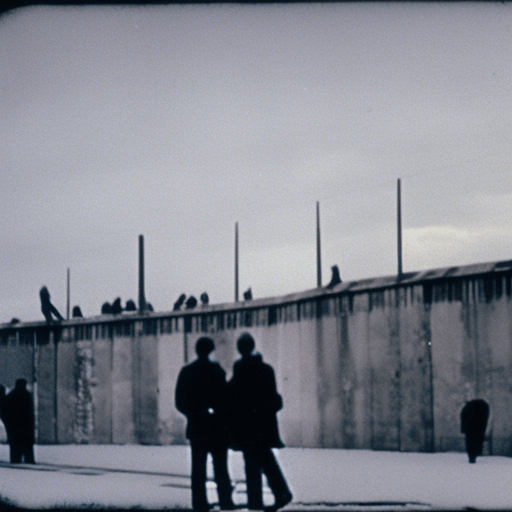The Fall of the Berlin Wall (1989)
The Fall of the Berlin Wall in 1989 marked a significant turning point in world history, symbolizing the end of the Cold War and the reunification of East and West Germany. This event was the culmination of years of political and social unrest in East Germany, as well as the result of changing international dynamics.
Background
Following World War II, Germany was divided into four occupation zones controlled by the United States, Soviet Union, Britain, and France. Berlin, located in the Soviet zone, was also divided into four sectors. Tensions between the Soviet Union and the Western Allies grew, leading to the formation of two separate German states in 1949: the Federal Republic of Germany (West Germany) and the German Democratic Republic (East Germany).
Construction of the Wall
In the years following the division, many East Germans sought to escape to the more prosperous West. By the early 1960s, the number of people leaving East Germany had reached alarming levels. To stem the flow of emigration, the East German government, with the support of the Soviet Union, decided to construct a wall separating East and West Berlin. On August 13, 1961, construction of the Berlin Wall began, effectively cutting off East Berlin from the rest of the city.
Life under the Wall
The Berlin Wall became a symbol of the Iron Curtain and the division between the communist and capitalist worlds. It was heavily fortified with guard towers, barbed wire, and a “death strip” that included mines and tripwires. The wall not only physically divided families and friends but also created a stark contrast in living conditions between East and West Berlin. While West Berlin flourished as a democratic and prosperous city, East Berlin suffered from economic stagnation, political repression, and limited freedoms.
Protests and Reform
In the late 1980s, the Soviet Union, under the leadership of Mikhail Gorbachev, introduced a series of reforms known as glasnost (openness) and perestroika (restructuring). These policies aimed to revitalize the Soviet economy and promote political openness. However, they also had unintended consequences, inspiring people in Eastern Europe to demand greater political freedoms.
Peaceful Revolution
In East Germany, a growing movement for change emerged. Mass protests, led by groups such as the New Forum and Democratic Awakening, called for political reform and free elections. The government’s response was initially harsh, with arrests and violence against protesters. However, as the protests gained momentum, the East German government was forced to make concessions.
The Fall of the Wall
On November 9, 1989, the East German government announced that citizens would be allowed to travel freely to the West. This announcement was made in response to mounting pressure from the protests and a misunderstanding by a government official during a press conference. Thousands of East Germans flocked to the border crossings, demanding to be let through. Overwhelmed and unprepared, the border guards eventually gave in, and the Berlin Wall was breached.
Reunification and Legacy
The fall of the Berlin Wall set in motion a series of events that led to the reunification of East and West Germany on October 3, 1990. The reunification marked the end of the Cold War and the beginning of a new era in European history. It also symbolized the triumph of democracy and freedom over communism.
The fall of the Berlin Wall remains a powerful symbol of hope and unity. It serves as a reminder of the resilience of the human spirit and the power of ordinary people to bring about change. Today, fragments of the wall can still be found in Berlin, serving as a reminder of the city’s turbulent past and the triumph of freedom over oppression.












